Matador Network's Blog, page 934
January 27, 2020
Philippines builds roads of plastic
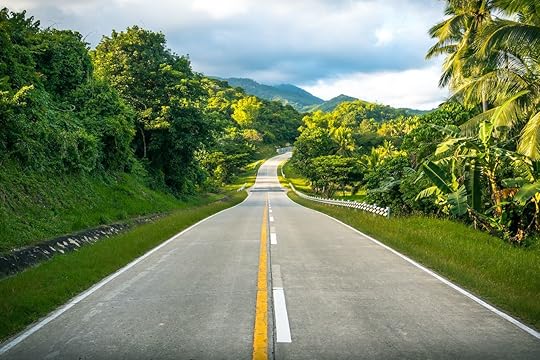
The Philippines, one of the world’s top plastic polluters, is trying to address this pressing issue by building much-needed infrastructure with plastic waste. Several Philippine companies, including San Miguel Corp. and Aboitiz Equity Ventures Inc. are using discarded shopping bags, sachet wrappers, and plastic packaging to power cement plants and build roads. The first road built using a combination of plastic scraps and asphalt has just been laid down by San Miguel Corp, with nearly 2,000 pounds of plastic used to pave a 16,000-square-foot site.
According to studies by San Miguel, roads built using plastic scraps actually exceed government standards and are even more durable than those built with asphalt.
The main targets of this initiative are soft plastics that are difficult to recycle and which comprise a significant portion of the trash found in Philippine landfills and waterways.
San Miguel Corp sourced the trash from Nestle and Unilever, two companies that have launched a plastic trash collection program in the country. According to Bloomberg Green, they offer free products in exchange for clean and cut plastic waste. Nestlé is currently the second biggest plastic polluter in the world, behind Coke.
The country’s issues are linked to a subpar waste management system, which has failed to keep up with a growing population and increased consumption. The infrastructure program will hopefully negate some of the country’s waste, as more highways, bridges, and dams continue to be built. 

More like this: 6 steps you can take today to become a zero waste traveler
The post The Philippines is building roads using recycled plastic appeared first on Matador Network.

Northern lights from hot air balloon

Seeing the northern lights is a magical experience that is difficult to top — until hot air balloons get involved. Off the Map Travel is taking viewing the northern lights to another level by taking travelers up into hot air balloons above the Swedish Laplands to see the amazing celestial phenomenon.
During the four-day, three-night experience titled Aurora in the Sky, guests will have the chance to fly 130 feet into the sky into a hot air balloon anchored to the ice below and float in absolute silence to view the northern lights. Afterward, guests will go glamping at the beautiful Aurora Safari Camp, far away from civilization, in traditional Sámi dwellings called lavvus. The experience also includes snowmobile excursions and other customizable adventures in Lapland.
During the trip, you’ll be able to see the northern lights in Arctic Sweden from the basket of a balloon, so you can feel even closer to the amazing celestial phenomenon.
The experience starts at $2,970 per person (excluding flights) and will run from December 2020 to April 2021, giving you plenty of time to plan ahead. Bookings start in May 2020. 

More like this: The 7 most amazing places to go hot-air ballooning around the world
The post Watch the northern lights from a hot air balloon in Arctic Sweden appeared first on Matador Network.

January 24, 2020
Dog-friendly hotels around the world

Dogs are part of the family, and as that group dynamic has evolved, it’s only natural that our vacationing style has too. More of us are traveling with pets, and to meet this demand, hotels around the world are not only catering to this market, but they’re also creating a whole new genre of doggy-lux. Embroidered blankets at Le Meurice in Paris, designer leashes and collars at London’s exclusive Rosewood Hotel, and an entire VIP dog floor at Hotel Nikko in San Francisco have raised the bar in dog-friendly hospitality. Instead of spending on a kennel, owners can splash out on the VIP treatment and make memories with the whole family. So if your best mate deserves a vacation as much as you, we’ve rounded up 12 of the best hotels around the world for you and your dog.
1. The Dog House, Bruges, Belgium

Photo: Kat Barber
English ex-pats Susie and Nick, and their pups Dexter and Roxy, have created The Dog House, a welcoming B&B for dogs, their owners, and anyone who wants to hang out with their pups. With sophisticated open-plan rooms without extra cleaning fees, dog treats and bowls, a welcome pack highlighting local dog spots, and even some local Belgian dog beer in the fridge, this is a great place to settle in for a few nights.
Cost: From $340, two-night minimum
Where: Verversdijk 4, Brugge, Belgium
2. Hotel Grimming, Rauris, Austria

Photo: Hotel Grimming
You must have a dog to stay at this chalet-style Austrian hotel set high in the alps. Not only are all the rooms set up for dogs with large beds and over 130 types of dog food, but there’s also a huge fenced outdoor play area and doggy pool. After your pup has played outside all day, get them cleaned up for in the dog bath complete with brushes, hairdryers, and dog shampoo. And to top it off, in winter you can leave your dog with the in-house sitter while you hit the ski slopes.
Cost: From $190 per night
Where: Marktstrasse 25, Rauris, Austria
3. Hotel Wolf, Oberammergau, Germany
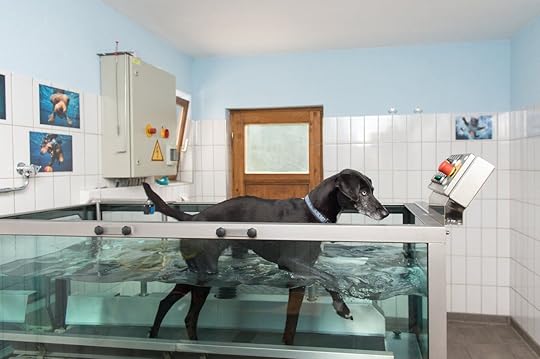
Photo: Hundesporthotel Wolf/Facebook
In the tiny town of Oberammergau in southern Germany, dogs truly are the guests of honor. Absolutely nothing a dog could want has been forgotten. Included in the nightly price is access to three large sports halls, underwater treadmills, a dog swimming pool, fridges, beds and bowls, showers, and towels all for your pup. Plus you can book on-site physiotherapy, massages, and agility sessions for your pup. Human needs haven’t been ignored, with spa treatments, massages and saunas available, bike hire, plus a four-course evening meal served in the dining room.
Cost: From $160 per night
Where: Dorfstraße 1, Oberammergau, Germany
4. Le Meurice, Paris, France

Photo: Le Meurice/Shutterstock
The godfather of dog-friendly hotels, the palatial Le Meurice has been welcoming pets for over a century, even playing host to Salvador Dali and his ocelots on occasion. These days all dog guests receive an engraved dog tag, a plush blanket with their name embroidered on it, plus the standard treats, bowls, beds and dog menu. The concierge is also on standby to walk your dog through the nearby Tuileries Garden.
Cost: From $1157 per night
Where: 228 Rue de Rivoli, Paris, France
5. Pineapple hotels, United States

Photo: Staypineapple Hotels/Facebook
At the ultra-trendy Pineapple hotels, any size of pets can stay for a fee of $25 per night. If you choose to upgrade to the pup pack, comprised of a dog bed, treats, food bowls, and waste dispenser, the daily fee is only $12.50. They have hotels sprinkled throughout the US in New York, Chicago, San Francisco and Boston, Seattle, Portland, and San Diego.
Cost: From $235 per night
6. Rosewood London, London, England

Photo: Rosewood London
At Rosewood in central London, it’s all about five-star luxury for you and your pet. The hotel has been welcoming pets since 2013 with comfy beds, treats, and no extra charges. And they’ve recently taken it to the next level, creating a bespoke one-night Canine Package that includes a designer Barbour bed, collar and leash, homemade ethical dog food, dog-grooming from celebrity groomer Jamie Griffen, concierge dog-sitting, and a comprehensive dogs guide to London.
Cost: From $2700 per night for the Canine Package
Where: 252 High Holborn, Holborn, London, United Kingdom
7. Atholl Arms Hotel, Dunkeld, Scotland

Photo: Atholl Arms Hotel
In 2019, the Atholl Arms was voted the #1 Pet-Friendly Hotel of the Year in the Scottish Hotel Awards. Here, dogs are welcomed in the lounge, bar, and meeting place. Not only do they offer doggy welcome packs including mats, towels, bowls, and treats, but they’ve also partnered with local dog groomers and offer dog walks in the surrounding woodlands. Best of all, half of the nightly $20 dog fee is donated to Pepa’s Pet Cancer Foundation, supporting pets struggling with cancer.
Cost: From $100 per night
Where: Bridgehead, Tay Terrace, Dunkeld, United Kingdom
8. Regent, Singapore

Photo: Regent Singapore
For those looking for a staycation with their pup, Regent Hotel in Singapore has created a signature Pet Staycation Package for pets under 15 kilograms. A welcome gift box includes a chew toy, treats, microfibre towel, pet bed, water, pet food, hand sanitizer, and gentle dog shampoo, plus a special pet menu. When it’s time to stretch your legs, the nearby Botanic Gardens offers a range of easy on-leash trails.
Cost: From $230 for the Pet Staycation Package
Where: 1 Cuscaden Rd, Singapore
9. The Twelve Hotel, Galway, Ireland

Photo: The Twelve Hotel/Facebook
Recently voted the #1 pet-friendly hotel in Ireland, Twelve Hotel is doggy heaven. You can pack light as they will appoint your suite with everything your pet might need: beds, bowls, leashes, toys, treats, doggy bags, and towels. To top it off, not only can you order room service, but your dog is also offered a dedicated menu. A map of the nearby woods and beaches will ensure your morning walks explore the best the area has to offer. There are no extra charges, but the hotel will take a security deposit, and it limits one dog per room.
From $160 per night
Where: Barna Rd, Freeport, Galway, Ireland
10. Hotel Nikko, San Francisco, US

Photo: Hotel Nikko San Francisco/Facebook
For those traveling to San Francisco, Hotel Nikko is ready to welcome your dog with open arms with a dedicated VIP (Very Important Pet) floor and a large terrace with a grassy pet run. The nightly $50 fee (for small pets) includes a dog bed, bowl, and treats. Plus, resident mascot Buster is on hand to play with your pup in the best dog-friendly spots in the city.
Cost: From $209 per night
Where: 222 Mason St, San Francisco, United States
11. Loews Hotel Vogue, Montreal, Canada

Photo: Loews Hotel Vogue, Montreal
With a complete pet program, Loews could never be left off this list. Personalized bedding, leashes, collars, water bowls and placemats, dog treats and toys, plus a complete guide to dog-friendly walks and restaurants are all on offer at their Montreal hotel. When it’s time to settle in for the night, you can even call the gourmet room service menu for dogs developed by the hotel’s executive chef.
Cost: From $135 per night
Where: 1425 Rue de la Montagne, Montréal, Canada
12. Pier One Sydney Harbour, Sydney, Australia

Photo: Pier One Sydney Harbour, Autograph Collection/Facebook
At Pier One, you can swing open your doors and begin your morning stroll directly under the Sydney Harbour Bridge. A maximum of two small dogs are allowed in each room, and for $60 per pet, your dog will get a comfy dog bed, food, and water bowls. And if you’re feeling extra generous, splurge on a stocked mini-bar with dog-friendly snacks. After a day exploring Sydney, you can relax on the outdoor terrace at sunset with your pup and take in the magnificent views of the harbor.
Cost: From $590 per night
Where: Walsh Bay, 11 Hickson Rd, Sydney, Australia
13. Fairmont Miramar Hotel and Bungalows, Santa Monica, California

Photo: Laura Reilly
In a city where everyone travels with their dogs at all times, it’s no surprise that even one of the most luxurious hotels in Santa Monica is extremely dog-friendly. At the Fairmont Miramar, you can order the “Dog Be With You” package, which means your dog will get its own bed, a collection of toys, treats, and a dog bowl — which dog owners know is one of the most annoying and messy things to pack. Best of all, your dog can get in on room service with you. Choose between chicken, beef, or salmon entrees, featuring other healthy ingredients like organic brown rice, free-range scrambled eggs, potatoes, peas, and carrots. You can even get a luxury dog tag made at the Atelier jeweler downstairs if you want to give your pooch the true LA treatment.
Cost: $549 a night
Where: 101 Wilshire Blvd, Santa Monica, CA 90401 

More like this: How to teach your dog to be a polite hotel guest
The post The best hotels around the world for your dog appeared first on Matador Network.

Why follow the Camino de Norte

Since the 1990s, the medieval pilgrimage El Camino de Santiago has seen a resurgence in popularity, seeing over 300,000 pilgrims a year. It’s not surprising why this pilgrimage has become so popular. It’s easily accessible with diverse route options, luggage transportation services, and various accommodation types, from hostels to elegant inns.
However, over-tourism is becoming a problem on the more popular routes. Over three-quarters of pilgrims hike the French and Portuguese routes, pathways which certainly have their appeal. Yet fewer than six percent of pilgrims walk the Del Norte route. Besides fewer crowds, the Camino Del Norte traverses some of the beautiful and interesting regions of Spain. Here’s why people should give the Camino del Norte a second look.
What you need to know
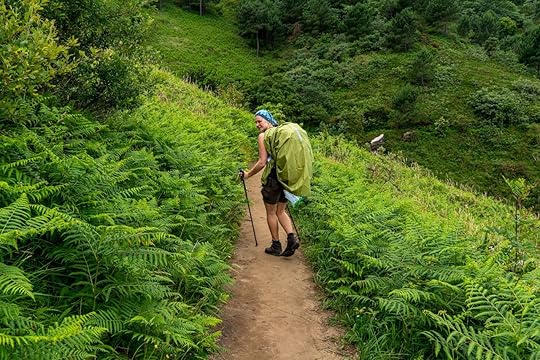
Photo: Max Bauerfeind/Shutterstock
If you’re looking for a challenge, choose Del Norte. Although it runs along the northern coast of Spain, it’s not just a walk on the beach. You’ll have a much more physically intense hike as you go up and down mountains, rolling hills, and cover extensive forests. Sometimes you’ll be climbing along steep cliffs on the coast itself.
Besides the geography, the weather is also more temperate, given the closeness to the coast, so expect more rainy days. The precipitation averages around eight or nine days from June to August, and the average temperature is around 64 degrees Fahrenheit. The rest of the year sees at least two or three added days of rain — so if you’re hoping for less rain, go from June to August.
The 512-mile journey of the Camino del Norte passes through four autonomous regions — similar to states or provinces — of Spain. It takes most pilgrims at least 30 days to complete the journey, so take your time and enjoy each region, each of which has unique characteristics and scenery.
You won’t need a sleeping bag for the hostels you stay in although a sleeping bag liner or a blanket can be useful. Most pilgrim hostels like albergues or monasteries won’t require advance notice for staying the night; however, they operate on a first-come, first-served basis. If you hike later into the day, you might experience some strike-outs. If you decide to stay in a hotel, it’s wise to book at least a couple of days in advance. You can do a same-day booking, but hotels can fill up fast, especially in the summer.
Basque Country
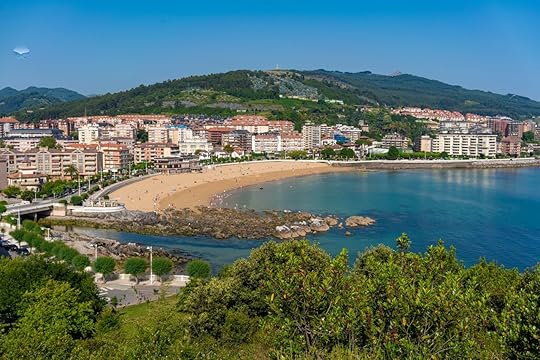
Photo: Max Bauerfeind/Shutterstock
The first autonomous region is the Basque Country. The Camino del Norte starts in Irun, a small town about 15 miles east of San Sebastian, but many pilgrims start in San Sebastian itself. You’ll be doing a lot of up and down hiking through the mountainous region of Basque Country. You’ll climb 1,300 to 1,600 feet on an average day, so start conditioning.
There are also dense forests consisting of evergreen fir and eucalyptus trees. During rainy seasons, the trails can get a little muddy, so get some foldable walking poles. (Walking poles also take the stress off knees on downhill sections and can also be helpful if you have blisters, as you can put more weight on them and relieve your feet.) The trail typically goes back and forth between the coast and the mountains, although sometimes you’ll hike on some steep cliffs that graze the coast. On sunny days, the ocean and sky match a brilliant blue.
Stop and take an extra day in Bilbao, which marks the end of Basque Country. It’s a big city and can take the whole day to hike through, so check out the Guggenheim Museum, a modern art museum that’s famous for its architecture and is one of the biggest museums in Spain. Visit the Neo-Gothic Santiago Cathedral of Bilbao, which dates back to the 14th century. You can also relax in plazas, where there are street performers, small markets, and food vendors.
Cantabria
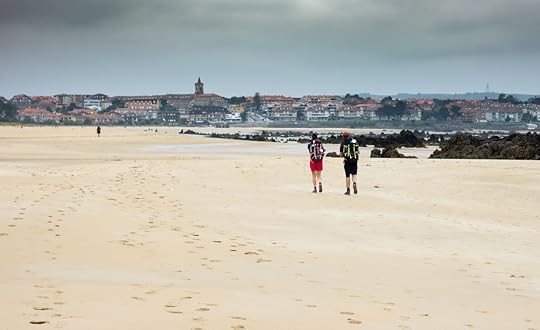
Photo: Iryna Savina/Shutterstock
After walking through Bilbao, you’ll enter Cantabria. It will get a lot less rugged in this part of the region. You’ll be walking along roads and sidewalks and through many towns. You’ll occasionally walk along highways, but because the Camino is such a big part of Spanish culture, cars will keep a safe distance from you. The towns aren’t too large, so you’ll still walk through rolling hills and valleys.
It’s not all asphalt, as there are some eucalyptus forests with dirt roads. You’ll walk by small farms, hear farmers herding their sheep, and have chances to feed adorable miniature ponies along the road. In this region, you’ll pass through Santillana del Mar, a medieval town that was built between the 14th and 15th centuries. The streets are almost entirely made out of cobblestones, and the religious buildings are as old as the village.
The highlight of this region is an albergue in Güemes. It’s hosted by Father Ernesto, an 80-year-old priest who has been hosting for over 20 years. He grew up in the albergue he now hosts, although he has remodeled and built many additions since then. He can host up to 100 pilgrims, and every night he tells his story of how the albergue came to be. After he tells his story, pilgrims eat a large dinner of salad, paella, oysters, and wine.
Asturias

Photo: Soloviova Liudmyla/Shutterstock
This region has colorful fishing villages and beaches, but the Camino also takes you through green fuzzy mountains with the occasional sheep herd passing through. The Cantabrian mountain range goes through both Cantabria and Asturias and presents some enjoyable challenges on the Camino. The ascents and descents are far more gradual than in Basque Country. However, you will want to be prepared with water and food as the distance between towns is much greater.
The mountains can become thick with fog, and the trails might get a little ill-defined, or even overgrown with grass, so keep a map with you and watch out for the yellow painted arrows and scallop shells. The yellow arrows can be found on the sidewalk, the street, city walls, on tiles as part of buildings, and even on rocks on trails. There are also stone posts that feature the scallop shells, which is especially useful in more rural parts.
The road diverges in this region. You can stay on the Camino del Norte, or you have an option to hop on the Primitivo route, which was the original Camino route to Santiago de Compostela. King Alfonso II first hiked it in the ninth century. On the Primitivo route, you can expect a lot more trekking through mountains, valleys, and rivers. If you’re hoping to have an isolated experience, take the Primitivo. It’s not as popular as the other routes and can have some muddy trails. If you’d like to take it a bit easier, stick with Del Norte.
Galicia

Photo: gregorioa/Shutterstock
This is the end stretch of the Camino and goes inland. Take advantage of the opportunity to stay the night at the Sobrado Abbey. It was originally founded in 952 and is over a thousand years old. It went through different periods of use and decay, but now most of the buildings have been rebuilt and restored. The parts of the monastery that haven’t been restored yet have some collapsed roofs, an overgrowth of ivy, and a green tint to the old stone walls, altars, and pillars. The monastery closes its doors at 7:00 PM, but you can use that time to explore the ancient structure.
Monasteries can get very cold, so if you plan on staying in a monastery at least once, bring a blanket or sleep in layers. The Sobrado Abbey supplies a blanket as well. You’ll need to bring and prepare your own food, but Sobrado has a couple of small markets nearby where you can get your supplies. The monastery has a kitchen available, complete with an electric stove, kettle, pots and pans, and utensils. You’ll share with other pilgrims, but the kitchen also holds washing machines and dryers and enough room for 25 people.
The Cistercian monks hold an evening service, where they sing prayers similar to the style of Gregorian chants. The service is held inside a small refurbished chapel upstairs in the abbey. It has stained glass windows and is the warmest part of the whole building. The sun sets around the same time as the evening prayers and shines through the stained-glass windows, giving a cool, colorful effect in the overall dark chapel. The chanting is accompanied by a few notes of an organ, and the room is carpeted, so nothing echoes. It’s very soothing to listen to the chanting — so try not to fall asleep, no matter how exhausted you are.
The charm of the Camino is still present
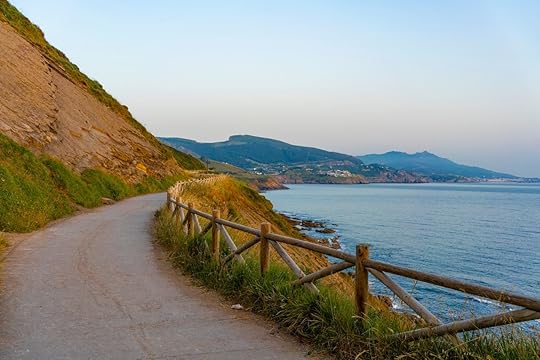
Photo: Max Bauerfeind/Shutterstock
Albergues are one of the defining characteristics of the Camino. Most of them operate based on donations from pilgrims, so you can give whatever you’re comfortable with spending. Some people also pay for their stay by purchasing a pilgrim’s meal, which usually consists of a salad, slices of pork, and fries.
Some albergues function solely as a place for you to sleep. Other albergues have hosts who make your stay a memorable experience. You take off your shoes when you go inside the building, do some laundry, set up your bed, take a nap, and then the host feeds everyone around 8:00 or 9:00 PM. Everyone gets a chance to share why they’re hiking the Camino, and you get to meet people from many parts of the world.
After you’ve reached your destination for the night, head to the local plaza. Plazas are prominent gathering places in many Spanish cities. You’ll see parents and their small children, teenagers playing soccer with friends, and older adults with their elderly parents. Little kids will try to talk to you; learn some Spanish. You can get by without being fluent in Spanish, but the locals will appreciate it if you know a little bit of the language and try to converse with them.
It’s more environmentally friendly

Photo: hydebrink/Shutterstock
Major Spanish cities like Barcelona have experienced some ill-effects of over-tourism, including rising housing costs related to an explosion of Airbnb properties and pollution from cruise ships. The French and Portuguese routes can also suffer from crowds, which can lead to rising costs in accommodations and litter along the way.
The constant influx of people can also distract you from potential introspective moments. It’s okay to be a tourist — we all are — but part of sustainable travel means giving the popular places some breathing room by either going in the off-season or taking alternate paths.
The Camino del Norte is a worthwhile alternative path. You’ll see a different side of Spain that many people don’t. You’ll have moments of quiet hiking through thick forests and along the coast, but you’ll also meet people to hike with for a couple of days and develop lasting friendships. It’s the perfect chance to walk yourself into a different frame of mind. 

More like this: 15 things you need to know before walking the Camino de Santiago
The post In Spain, you should choose the Camino del Norte over other Camino routes appeared first on Matador Network.

Best LGBTQ museums and archives

People in power control the pages of history; people without it usually suffer the consequences. In a recent analysis of commonly used history textbooks in Texas and California, the New York Times found that students in Texas receive information only about hot-button LGBTQ issues from the past 50 years: Stonewall, the AIDS crisis, and the recent fight for marriage equality. In California, students receive additional information concerning queer history like sex assignment surgery in the 1950s and cultural contributions made by historical LGBTQ figures. Clearly, not all LGBTQ history lessons are created equal.
Preserving and sharing the history and culture of queer individuals is a necessary step in the fight for LGBTQ rights. Invisibility leads to misunderstanding and discrimination. Many queer historians realized this after the gay liberation movement took off in 1969 and started collecting and exhibiting queer art and artifacts as a way to promote acceptance and awareness for its communities. These 13 museums and archives around the world are the best in their field. Each one celebrates LGBTQ lives and protects queer voices to ensure they’re never again lost to the prejudice of those in power… and publishing.
1. Leslie-Lohman Museum of Gay and Lesbian Art
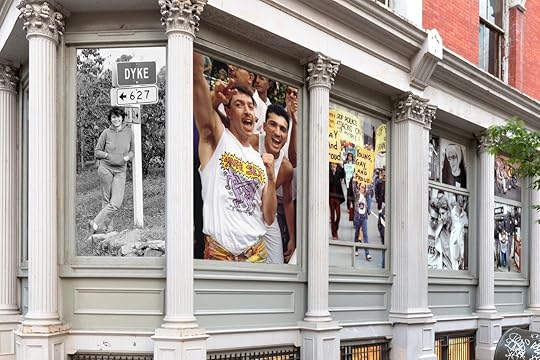
Photo: Leslie-Lohman Museum of Art/Facebook
The summer of 1969 was radical for the state of New York. Woodstock took place in August, the Stonewall Riots broke out in June, and one month prior, gay couple Charles Leslie and Fritz Lohman held the first “Exhibition of Homoerotic Art” in their sprawling Soho studio. The subversive art collection drew a massive crowd, prompting the pair to continue growing and exhibiting their exceptional assemblage over the next decade. When the AIDS epidemic hit Manhattan, the partners rescued works from the homes of dying gay artists that would’ve otherwise been destroyed.
The Leslie-Lohman Gay Art Foundation was created in 1987, officially became a museum in 2016, and is currently located in a sprawling first-floor space on Wooster Street. It’s often regarded as the world’s first queer art museum. The collection of over 30,000 objects spans three centuries and includes everything from phallus sculptures and a “Cunt Coloring Book” to famous paintings by Keith Haring and other notable queer artists. There are six exhibitions shown throughout the year and a separate project space where local artists showcase their work and partake in figure drawing sessions.
Where: 26 Wooster Street, New York, New York, United States
2. Tom of Finland Foundation
This two-story house on Laveta Terrace in Echo Park seems unassuming from the outside, but once you pass the tall street-facing hedges, you’re in a veritable gay-erotica dreamland. Touko Laaksonen, the Finnish artist who worked under the pseudonym “Tom of Finland” to produce some of the most influential images in modern gay culture, is the rasion d’etre. After visiting Los Angeles in 1978, he started splitting his time between Europe and this very home, establishing the Tom of Finland Foundation in 1984. The house pays homage to his massive body of work (featuring lots of massive, muscle-bound male bodies) and serves as a safe space for other erotic artists looking to showcase and create material of their own. The estate is open to guests on Wednesdays from 5:00 PM to 7:00 PM for an art-viewing tea party; a nude figure-drawing session takes place once a month on Sundays from 1:00 PM to 4:00 PM.
Where: 1421 Laveta Terrace, Los Angeles, California, United States
3. ONE National Gay & Lesbian Archives
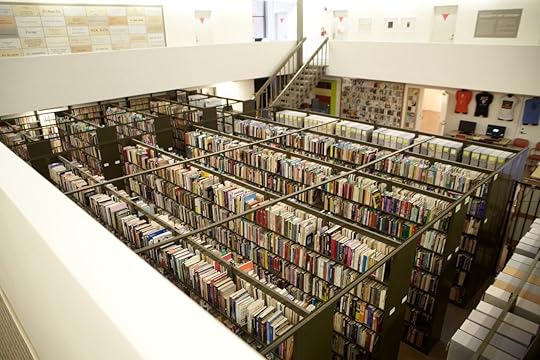
Photo: ONE National Gay & Lesbian Archives/Facebook
With over two million materials dedicated to LGBTQ history and culture, there’s way more than one reason why these archives are remarkable. Still, we’ll only begin with a couple: On top of being the US’ oldest active queer organization, the ONE Archives has the largest assemblage of LGBTQ-related items in the world. The organization began in 1952, and the archive’s main repository has been part of the University of Southern California Libraries since 2010. This space, located on West Adams Boulevard, functions as a gallery, cinema, and community center. ONE Gallery, an off-site exhibition space in the heart of West Hollywood (LA’s gayborhood), hosts free exhibitions throughout the year featuring historical documents and art from the expansive collection.
Where: 909 West Adams Boulevard, Los Angeles, California, United States
4. Museum of Trans History and Art
In 2013, MOTHA was founded as a platform for sharing the often-underrepresented voices of trans, non-binary, and gender non-conforming artists and historians. The company shares a series of performances, panel discussions, and exhibitions throughout the year, mainly in the San Francisco Bay Area, but operates without a permanent home. MOTHA’s goal is to become a brick-and-mortar institution where artists, hirstorians, and scholars can showcase their work. If all goes as planned, MOTHA will be the first museum in the world dedicated specifically to the transgender community.
Where: San Francisco, California, United States
5. GLBT History Museum

Photo: The GLBT Historical Society/Facebook
At the height of the AIDS crisis, a group of queer activists began gathering discarded possessions from dying gay men to save cultural stories that would’ve otherwise been lost with the pandemic. The many photos, letters, and other memorabilia they collected gave birth to America’s first queer history museum. This treasure trove of queer Americana, featuring everything from Harvey Milk’s personal belongings to matchbooks from old bathhouses, opened its current exhibition space just off Castro Street in 2010.
A permanent exhibition in the main gallery, “Queer Past Becomes Present,” draws on documents that span over 100 years of LGBTQ history in the United States with a sharp focus on the Bay Area. Two other galleries offer rotating exhibitions dedicated to topics like LGBTQ activism and queer art. The Dr. John P. De Cecco Archives and Research Center, located in Mid-Market, houses the museum’s vast array of periodicals, artifacts, and oral histories.
Where: 4127 18th Street, San Francisco, California, United States
6. Lesbian Herstory Archives
Herstory is just as important as his, but in queer culture, it’s often a struggle for the letters L, B, T, and Q to be heard above the roar of the G. As the gay liberation movement began in the 1970s, a group of women recognized this sway of the patriarchal pendulum and banded together to form the Lesbian Herstory Archives as a way to safeguard the records of lesbian life. LHA, located in a brownstone on a residential street in Park Slope, Brooklyn, is now the world’s largest archive curated by lesbians and about lesbians. The archives share its robust collection in several traveling exhibits, including “Queer Covers,” which takes a look at lesbian pulp fiction and its related artwork from the late 1930s to the 1960s. Guests and researchers are welcome to check out the archive’s many photographs, books, videos, and recordings whenever they’re open; groups can schedule tours in advance.
Where: 484 14th Street, Brooklyn, New York, United States
7. Transgender Archives at the University of Victoria
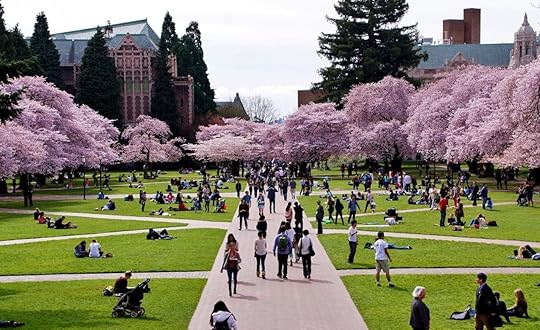
Photo: University of Victoria/Facebook
With materials that span over 1.5 football fields in length, this UVic Library archive is the most extensive collection in the world dedicated to political and cultural histories of trans, non-binary, and Two-Spirit people. The wealth of items cover 15 languages, 23 countries, and nearly 150 years. While you can search the archives through the website’s discovery tool, taking a trip to see British Columbia’s rugged coastline and steep mountain ranges is almost as epic as getting to explore the university’s array of records, newsletters, videos, and artwork. Thanks to the vision of out trans man Dr. Devor Aaron, this groundbreaking collection gives visibility to a group of people often pushed to the sidelines of queer history, even in other LGBTQ museums and archives. The UVic Transgender Archives has been actively acquiring trans-related documents since 2007.
Where: Victoria, British Columbia, V85 5C2, Canada
8. Leather Archives and Museum
In the late 1950s, gay leather bars started popping up in major queer enclaves like San Francisco, New York, and Chicago. These hyper-masculine watering holes were a sexualized response to the anti-establishment biker movement following World War II. Within two decades, leather and BDSM would become an integral part of the queer community. Recognizing its importance in LGBTQ culture, Chuck Renslow and Tony DeBlase (designer of the leather pride flag), opened the Leather Archives and Museum in Chicago in 1991. The research center, library, and galleries offer a safe space to learn about the history of leather, kink, and fetish culture. Within the museum’s eight exhibition spaces, visitors can experience a kink dungeon, a “Room of Her Own” (think Virginia Woolf plus leather), and a gallery featuring ephemera from old leather bars.
Where: 6418 North Greenview Avenue, Chicago, Illinois, United States
9. Andy Warhol Museum

Photo: Sergei Bachlakov/Shutterstock
The late-great pop art pioneer Andy Warhol is a gay icon, and the Pittsburgh museum dedicated to his life’s work takes a colorful look at his overtly queer aesthetic. Warhol pushed the boundaries of queer art long before “gay” was okay — you can see it in his 1950s line drawings depicting the male form; the sexually charged Piss, Oxidation, and Cum paintings from the 1970s; and his self-portraits in drag. The seven-floor museum showcases his seminal works too — there are plenty of Campbell Soup cans and celebrity screenprints on display — all delightfully infused with the artist’s queer and campy point of view. On the last Saturday of each month, guests can take a guided tour exploring how Warhol’s sexual identity influenced his art. In addition to this, the museum operates as a queer performance space and hosts two annual LGBTQ initiatives — a prom for local queer youth and a seven-week School of Drag workshop for 13-19-year-olds.
Where: 117 Sandusky Street, Pittsburgh, Pennsylvania, United States
10. IHLIA LGBT Heritage Archives
Holland’s first gay activist, Jacob Anton Schorer (1866-1957), founded the Dutch Scientific Humanitarian Committee (NWHK) in the first half of the 20th century and began amassing one of Europe’s first collections of scientific texts about homosexuality. When Germany invaded the Netherlands in 1940, he destroyed the archive. Luckily, his efforts were not in vain. His name now adorns one of the libraries run by IHLIA — the largest archive of LGBTQ materials in Europe.
Located in Amsterdam’s public library, IHLIA dates back to 1999 when Homodock and the Lesbian Archives of Amsterdam joined forces to create a space where queer history could be preserved for future generations. In its first year, the archives worked tirelessly to reconstruct Schorer’s collection, which contains many of NWHK’s original texts. The entire IHLIA collection — spanning over 100,000 pieces — includes books, films, photographs, t-shirts, and even queer condom packaging. While most of the materials are only viewable on-premises, there’s a pink cabinet of items that are free to borrow, and a catalog available online for “Open Up!,” a project dedicated to the history of LGBTQ life in central, east, and southeast Europe.
Where: Oosterdokskade 143, Amsterdam, Netherlands
11. Stonewall National Museum and Archives

Photo: Stonewall National Museum & Archives/Facebook
Don’t let the name fool you — aside from its collection of over 30,000 LGBTQ works of art, records, and other materials, this Sunshine State museum has no connection to the NYC bar where the gay liberation movement began in 1969. When Mark Silber started collecting queer erotica in his Hollywood basement in 1972, “Stonewall” was already synonymous with gay rights, so he used the name to attract queer folks without ruffling any conservative Floridian feathers. In addition to its extensive queer archive, SNMA has a gallery in Wilton Manors, a town that lovingly refers to itself as “the second gayest city in America.” (Provincetown and Palm Springs may have a bone to pick with this statement, but we digress.) The gallery hosts a series of exhibits throughout the year, along with film screenings, panel discussions, and other LGBTQ-centric events.
Where: 2157 Wilton Drive, Wilton Manors, Florida, United States
12. Australian Lesbian and Gay Archives
What started in 1978 as a few small filing cabinets has grown into an archive of over 150,000 items related to LGBTQ life in Australia — the country’s largest repository of its kind. In addition to its extensive research database, available by appointment, the Melbourne-based ALGA hosts in-house exhibitions celebrating local queer history. This year, the volunteer-run organization will relocate its headquarters to Melbourne’s Victorian Pride Centre, a new multi-use space that’ll be home to many of the area’s major LGBTQ organizations.
Where: Melbourne, Australia
13. Schwules Museum

Photo: Schwules Museum/Facebook
In the novel Gay Berlin, historian Robert Beachy argues that the modern conversation surrounding homosexuality, and the political movement that sprang forth, originated in Germany in the late 19th century. It’s fitting, then, that Germany is home to the world’s first gay history museum. The museum was founded in 1985, one year after a popular LGBTQ-centric exhibit at the Berlin City Museum sparked public arousal for more queer content. Located in a former Schöneberg printing house near a strip of popular gay bars, the expansive collection is the perfect way to spend a couple of hours prior to hitting up the late-night haunts in Berlin’s gayborhood. Although Schwules Museum’s offerings initially catered mostly to cis-gay males (schwul is the Deutsch equivalent of ‘gay’), curators are actively working to create an inclusive space that also illuminates the stories of lesbians and trans identities.
Where: Lüzowstrasse 73, Berlin, Germany 

More like this: The 10 best LGBTQ-friendly small towns in the US
The post The best LGBTQ museums and archives around the world appeared first on Matador Network.

Eco-friendly trips to take in 2020

As 2019 came to a close, we wrote that some travel can actually be good for the planet. When we travel to natural habitats, we show locals, businesses, and policy-makers that there’s value in preserving these places. Tourism provides local communities with a viable economic alternative to selling for extraction and development. Visitors fuel jobs, giving a tangible, real-time value to natural resources. But where should you go?
We talked to experts around the world and got their top picks on some of the best, and most beautiful, places to put your tourism money to good work.
South America

Photo: NiarKrad/Shutterstock
We spoke with Don Sawyer of Brazil’s Institute for Society, Population, and Nature (ISPN) and Saúl Blanco Sosa, who’s responsible for sustainable tourism at NEPCon, a non-profit that seeks solutions that help people and tackle climate change.
Mamirauá Sustainable Development Reserve — Amazonas, Brazil

Photo: Marcos Amend/Shutterstock
Brazil houses the bulk of the Amazon rainforest. ISPN’s Sawyer recommends several locations where you can support local environmental efforts. One is the Mamirauá Reserve on the Amazon floodplain, the largest flooded forest reserve in the world. Mirarauá Institute supports several eco-initiatives, among them community-based tourism centered on the Uakari Lodge, a 10-room, floating lodge comprised of five cabanas. The lodge rises and falls with the seasons, as the water level here changes up to 40 feet every year. Three-, four-, or five-day stays include boating, bird watching, and dolphin watching opportunities, but hiking is only possible during the dry season.
Novo Airão — Amazonas, Brazil
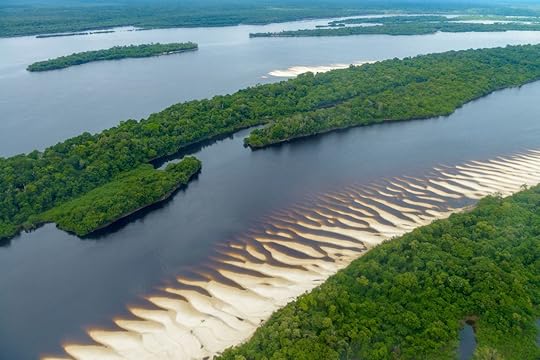
Photo: Marcos Amend/Shutterstock
Closer to the city of Manaus and hence easier to reach is the area of Novo Airão. Here he says you can visit traditional and indigenous communities and support the Institute for Ecological Research, which does great work here and in many of Brazil’s threatened regions. In Novo Airão, you can visit Jaú National Park, a massive forest reserve, and Anavilhanas National Park, a massive freshwater archipelago.
Cantão and Jalapão — Tocantins, Brazil

Photo: Ticiana Giehl/Shutterstock
Sawyer says the Brazilian savannah, or “Cerrado,” south of the Amazon has been suffering even more development pressure than the rainforest, and is disappearing faster — making ways for ranching and factory farming. This vital area is home to indigenous communities and astounding biodiversity, and it’s a critical watershed for much of Brazil and neighboring countries. Brazil’s savannah needs you. As Sawyer says, “The income provided by tourists helps maintain ecosystems and local cultures now under pressure from expansion of cropland and cattle-raising.”
Cantão State Park is one place where the two Amazon and Cerrado biomes meet. The park has over 500 bird species, as well as turtles, fish, deer, and jaguars. You’ll find the greatest animal diversity during the wet months, but tempting freshwater beaches appear in drier months like June and July.
Another area in Tocantins is Jalapão, which has emerged as an adventure-travel destination not just for Brazilians but also for a growing number of foreign visitors. With its clear-water springs, gushing waterfalls, plateaus, and 120-foot-tall sand dunes, it’s easy to see why. Fortunately, much of the region has earned protected status in parks like Jalapão State Park and the Parnaíba River Springs National Park.
Amazonia Expeditions Tahuayo Lodge — Loreto, Peru

Photo: najafragilis/Shutterstock
You don’t need to head to Brazil to visit places that are working to sustain the Amazon, as the rainforest actually stretches across nine countries. Blanco, NepCon’s sustainable tourism director, says his first pick in Peru would be the Tahuayo Lodge, which uses tourism to provide employment, offer local scholarships, and support research.
Located in Iquitos near the origins of the 4,000-mile-long Amazon River, the lodge offers activities like hiking, canoeing, birding, looking for primates or reptiles, and learning about the region’s colorful (and sometimes poisonous) frogs and insects. Amazonia Expeditions’ head guides are Peruvian men and women who mostly grew up near the company’s lodges.
Manu Learning Center — Manú, Peru

Photo: Zaruba Ondrej/Shutterstock
This is another destination in the Peruvian Amazon that Blanco recommends, which you can visit as a volunteer, intern, or tourist. As a tourist, you can stay anywhere from three nights to three weeks via tours focused on wildlife, adventure, family activities, and even cooking. The area is in the Manu Biosphere Reserve, which as the learning center tells it, has species so rare they don’t even have names for them. Your money supports the local community and research — and maybe even some eventual naming.
Yasuni National Park — Orellana, Ecuador
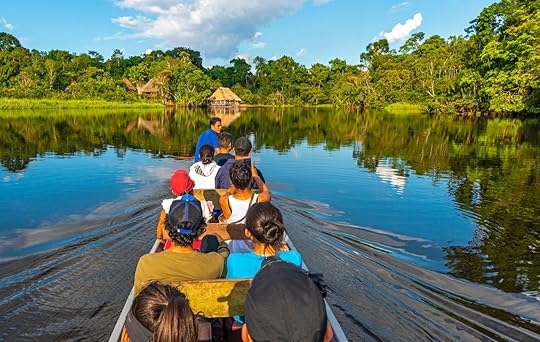
Photo: SL-Photography/Shutterstock
This 3,800-square-mile UNESCO Biosphere Reserve is one of the most biodiverse places on the planet. Nearly 600 species of bird have been recorded here, along with jaguars, pumas, tapirs, several monkey species, over a dozen bat species, and a unique giant otter. Blanco recommends staying at La Selva Amazon Lodge, which lies at the edge of Yasuni Park. Beyond canoe rides or hiking, guests are invited to visit local communities. Every group excursion into the national park includes a local guide whose knowledge of the area is unparalleled.
North America
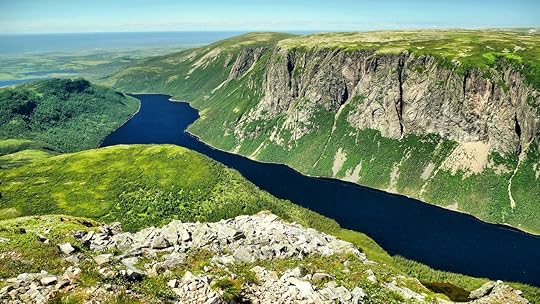
Photo: Clark Swimm/Shutterstock
We spoke with Alison Ronson, the National Director of the Parks Program at the Canadian Park and Wilderness Society, which works to protect Canada’s public lands and water. She told us about two stand-out parks where your tourism is welcomed by the local community and helps preserve the land.
Gros Morne National Park — Nova Scotia, Canada
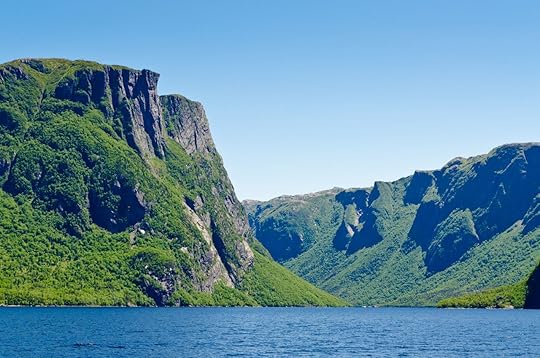
Photo: pavels/Shutterstock
On the west coast of the island of Nova Scotia, GrosMorne has tall peaks, dense forests of fir, maple, and birch, and a lake that’s actually an inland fjord flanked by green cliffs. Wildlife is abundant, with moose, caribou, red and arctic foxes, snowshoe hares, and ptarmigans among the many species you may encounter. Ronson tells us the local communities near the park depend on the tourism the park’s beauty brings, and they’ve opposed initiatives that could deter from the visitor experience. Their support has been instrumental in preventing fracking operations just outside the park.
“Fracking has been the biggest thing we’ve been fighting,” says Ronson, adding that they’ve had the “support of the local communities in fighting the fracking.” While there’s a provincial moratorium on fracking, there’s no law as yet against it — so visiting Gros Morne responsibly shows that tourism is a viable and preferable alternative to fossil fuel extraction.
Thaidene Nëné National Park Reserve — Northwest Territories, Canada
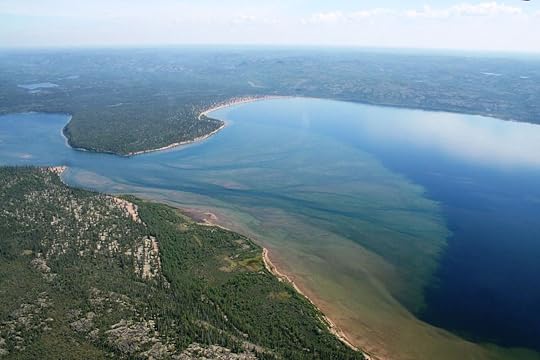
Photo: Thaidene Nene/Shutterstock
In August of 2019, an agreement signed by Parks Canada, the Government of the Northwest Territories, and indigenous groups created this protected area, which includes a national park and a locally administered wildlife conservation area. The total area under protection here measures over 10,200 square miles. Ronson says that the park doesn’t just protect this pristine area, which lies at the transition from boreal forest to tundra — but it also protects the way of life for the people of the Lutsel K’e Dene First Nation.
Activities in this forested and watery wilderness include exploration, berry-picking, camping, fishing, and hiking. Ronson says the Lutsel K’e Dene were interested in co-governing because they “see it as an opportunity to share their culture with visitors and bring in resources.” The Northwest Territories are also rich in diamonds, so help hold off the mining by showing that tourism there pays.
Europe

Photo: Ghiuz/Shutterstock
Melina Nikolova is the director of knowledge and education at the Adventure Travel Trade Association (ATTA). Based in Bulgaria, Nikolova works on how we can use “… tourism as a vehicle of economic growth and protection of cultural and natural assets.” Here are some of her European suggestions.
Danube River Biosphere Reserve — Romania

Photo: Calin Stan/Shutterstock
The 2,200 square miles of this UNESCO Natural World Heritage site comprise the most biodiverse natural area in Europe. The Danube River delta is a birdwatcher’s paradise, with over 300 species of birds and an astonishing additional 3,000 animal species, all within the area’s marshes, lakes, many waterways, and wetlands. Depending on the time of year, you can admire Egyptian white pelicans, Dalmatian pelicans, arctic geese, ibises, egrets, or cormorants, or you can fish for pike, perch, and catfish. Oaks and willows are just some of the 1,700 plant species, and you may spot deer, boar, foxes, or other large mammals.
Previously, Romania’s communist government wanted to develop the area, and Ukraine (site of the delta’s northern end) has been trying to build channels through the area — the efforts of which have so far been halted. “It’s a phenomenal natural area,” says Nikolova, adding, “And the only chance for it to remain this way is through tourism.”
Via Dinarica Mega Trail — The Balkans

Photo: Amir Cengic/Shutterstock
This 1,200-mile trail along the Balkan Peninsula’s Dinaric Alps was specifically designed to bring economic opportunities to the young Balkan countries through which it crosses. Old shepherding routes and paths etched during the 1990s war connect with newly made links to create this path through the steep mountains and lush valleys of Slovenia, Croatia, Bosnia and Herzegovina, Montenegro, Albania, Kosovo, Macedonia, and Serbia.
While Nikolova says some parts of the trail, such as the northern boundary in Slovenia, are more utilized, but “many stretches don’t see many tourists.” It’s in these places that your tourism can assist the local communities and culture. “It’s a way to support one of the most preserved natural areas of Europe,” says Nikolova.
Africa

Photo: Radek Borovka/Shutterstock
We spoke with Peter Knights, CEO of WildAid, which combats the illegal wildlife trade. He told us that in many poor African countries, eco-tourism and the jobs it creates are the only way governments have been able to justify dedicating resources to the preservation of natural lands, rather than to their development.
While countries like Kenya, South Africa, and Rwanda offer fantastic ecotourism opportunities, Knights says it’s also important to look beyond the countries that dominate the tourism sector. He asks us to, “Shop beyond the obvious.” Here are two of his recommendations beyond the big names; travel here may depend on your comfort level with risk.
Pendjari National Park — Northwest Benin

Photo: Thomas Clode/Shutterstock
Knights points out that Pendjari Park has “a unique population of West African lions and elephants.” The park is part of a trans-national protected area that includes the countries of Burkina Faso and Niger, and which is West Africa’s largest intact ecosystem. Benin is one of the poorest countries in the world, and tourism dollars can encourage the preservation of its critically endangered West African lions. Keep in mind, though, that while the US State Department recommends normal travel precautions in Benin, it asks travelers to reconsider travel to Pendjari Park due to terrorism threats from neighboring Burkino Faso.
Tarangire National Park — Manyara, Tanzania

Photo: Raimonds Romans raymoonds/Shutterstock
Another park Knights recommends is in Tanzania, a stunning park that he says is little visited. Beyond huge numbers of elephants, Tarangire is home to zebras, wildebeests, giraffes, impalas, elands, kudus, hartebeests, leopards, lions, hyenas, cheetahs, and even rarer mammals. Knights does point out that Tarangire can have tsetse flies, and while the chance of catching African sleeping sickness is low, please make travel decisions at your own risk.
Asia

Photo: Cornell J/Shutterstock
Tourists have become rightly concerned about the treatment of animals used in tourism. At Matador, we’ve reported on abuses like riding elephants, but we’ve also informed you of places where animals are treated well. With so much confusion over the issue, though, many local tour operators have opted to take animals out of itineraries altogether.
This has become “a crisis for people who do things the right way. Entire communities depend on these tours, and now they’re not receiving that income,” says ATTA’s Nikolova. So support those communities and the animals they care for by visiting ethical elephant sanctuaries in places like Thailand. Nikolova recommends:
Sabah — Borneo, Malaysia

Photo: Kjersti Joergensen/Shutterstock
This area on the island of Borneo is a Malaysian state that is one of the best places in the world to observe orangutans. In the same way that tourism has been vital to the protection of gorillas in Rwanda, tourism revenue helps to preserve the habitat and wellbeing of these Asian great apes. The Sabah area is also home to the proboscis monkey, the binturong bearcat, Borneo pygmy elephants, and pangolins, the most trafficked animals in the world. Supporting local communities with tourism is these endangered animals’ best chance of survival.
Sichuan Giant Panda Sanctuaries — Sichuan, China

Photo: clkraus/Shutterstock
Similarly, while panda bears are still vulnerable, they have been downgraded from endangered status only thanks to conservation efforts. Support these efforts by visiting the Sichuan Giant Panda Sanctuaries of Wolong, Mt Siguniang, and Jiajin Mountains, where almost a third of the planet’s giant pandas live. In addition, the 3,600-square-mile area is also to red pandas, snow leopards, and more than a hundred other mammal species. 

More like this: The 5 best environmental charities to make your money matter
The post The greenest trips you can take to help the planet in 2020, according to experts appeared first on Matador Network.

2020 World Monuments Watch sites
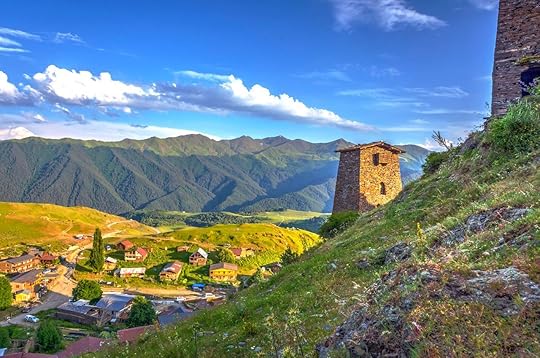
In 1965, a band of concerned global citizens created a nonprofit dedicated to preserving the world’s cultural heritage. Founded in New York City, the organization has come to be known as the World Monuments Fund, a name that’s now recognized across the globe for its conservation efforts. Every other year since 1966, the WMF releases a list of endangered heritage sites in need of preservation and protection, spreading awareness and encouraging support from the global community. From everyday farmhouses in Myanmar to the iconic Notre-Dame in Paris, here are this year’s 25 World Monuments Watch picks.
1. Koutammakou, Land of the Batammariba
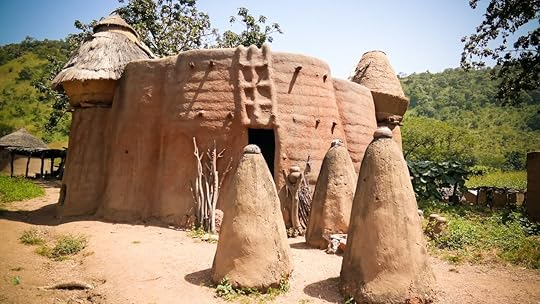
Photo: Homo Cosmicos/Shutterstock
Home of the Batammariba people for centuries, Koutammakou lies in northeastern Togo and part of neighboring Benin. The takienta, or traditional mud dwellings, found there have become symbols of Togolese heritage, earning the cultural landscape a UNESCO World Heritage site designation in 2004. The WMF has included Koutammakou on this year’s watch list to shed light on, and help preserve, Batammariba culture and its unique architectural practices.
2. Ontario Place

Photo: Ontario Place/Facebook
Ontario Place is a waterfront venue in Toronto, Canada, established in 1971 as a recreation center for the city’s residents. Spread across three artificial islands, it originally operated as a theme park and later became an entertainment hub, with concert spaces, a Cinesphere for movie lovers, parkland trails, and events and exhibitions hosted throughout the year. Ontario Place’s popularity has dwindled dramatically over the past couple of decades, leading to yo-yoing closures and reopenings over the years. The WMF and others share concerns over its future as the Ontario government has expressed interest in leasing the site long-term.
3. Easter Island-Orongo

Photo: Alfredo Cerra/Shutterstock
Easter Island, natively Rapa Nui, is a Chilean territory in the southeastern Pacific Ocean. Though the island is famous for its monolithic moai statues, it’s the Orongo village that the World Monuments Fund is particularly keen to protect. Stone dwellings and rock carvings found there date back to the 17th century, and its ceremonial center, Mata Ngarau, was the site of the annual Tangata Manu birdman cult rites in the post-moai era. This isn’t the first time Easter Island and Orongo have made the World Monuments Watch, appearing previously in 1996 and 2000. In 2020, preserving Orongo’s petroglyphs remains a top priority.
4. Alexan Palace

Photo: Kazzazm/Shutterstock
Ancient pyramids claim most of the spotlight where Egyptian architecture is concerned, but this palace in Asyut is a testament to a more modern era. Asyut flourished as a port city in the 19th century, attracting wealthy families that in turn built palatial estates through the turn of the century. Perhaps the most notable example is Alexan Palace, which has been government-owned since 1995 and is currently closed to the public. Local groups are currently in talks to conserve the Nile-overlooking property and convert it into a museum.
5. Notre-Dame of Paris

Photo: Jacky D/Shutterstock
Who can forget last April when flames ravaged Paris’ Notre-Dame, destroying the cathedral’s roof and spire. Reconstruction efforts and rooftop redesign proposals began almost immediately, but the degree of structural damage remains unclear. In solidarity with those working toward rebuilding the cathedral, and with high hopes for its restoration, the World Monuments Fund has included Notre-Dame on this year’s list of precarious landmarks.
6. Bennerley Viaduct
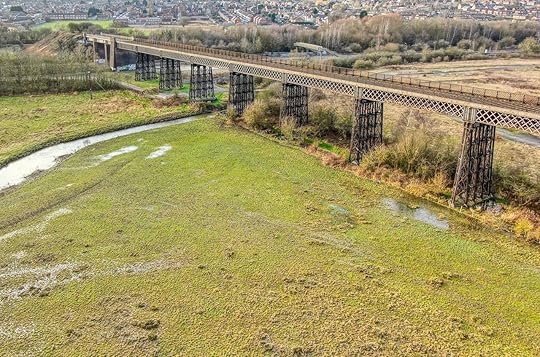
Photo: Peter Yeo/Shutterstock
The Bennerley Viaduct was built across north-central England’s Erewash Valley in 1877. It’s been in disuse for more than 50 years but continues to hold architectural value as one of only two remaining wrought-iron viaducts in England. Currently, a local community group has plans to convert the structure into a walking and cycling route that will connect to trailheads on either side. With its addition on the 2020 World Monuments Watch, the WMF intends to support both the community group and its transformation efforts.
7. Tusheti National Park

Photo: Ana Flasker/Shutterstock
Though eastern Georgia’s Tusheti National Park nabbed protected status in 2003, the cattle-herding Tushetians who have long lived there, moving from the highlands to the lowlands every winter to ensure year-round shepherding, are at risk of having their lifestyle compromised by tourism. The region is attractive to tourists for its outdoor and cultural opportunities, including horseback riding, hiking, and ruin-touring. Following the proposal of a new highway, which some 12,000 locals have signed an online petition opposing, the WMF hopes to promote sustainable tourism in the area while preserving Tushetian customs.
8. Gingerbread Neighborhood
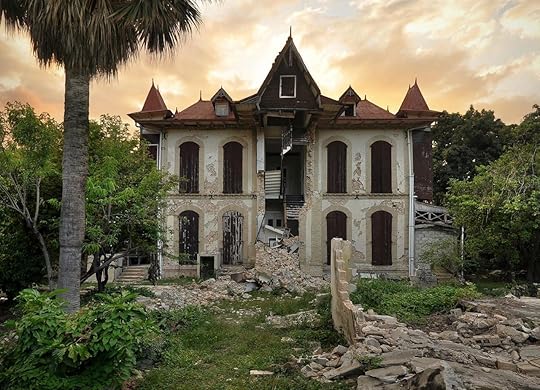
Photo: World Monuments Fund
In and around Port-au-Prince, Haiti, are a collection of “gingerbread” houses, so-named for their characteristic latticework. The 19th-century structures borrow from Victorian architectural styles, yet their high roofs, windows, and porches are adaptations indicative of the local climate. Though the city’s gingerbread houses were hit hard during the 2010 earthquake, locals rallied to restore them, turning the houses into symbols of community spirit rather than natural disaster. Though relatively structurally sound, the WMF has included the gingerbread neighborhood to help foster the educational and cultural centers that have begun appearing there.
9. Historic Water Systems of the Deccan Plateau
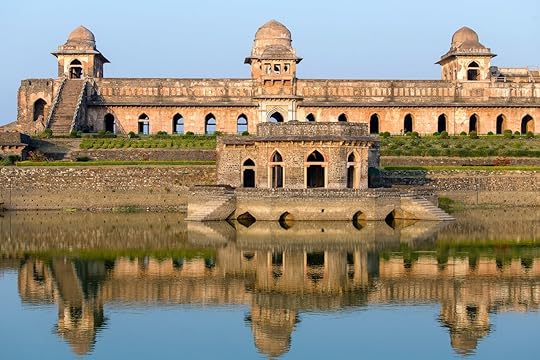
Photo: OlegD/Shutterstock
Water systems explain a lot about how a place, and a people, advanced. In the Marathwada region of Deccan, India, infrastructural developments like reservoirs, tanks, and wells were shaped by monsoon season, which sees extremely heavy rainfall for a few months that was necessary to conserve for the ensuing dry period. Today, only one of the 16 reservoirs built in Marathwada’s Aurangabad district is operational. According to the WMF, it’s worth preserving not only as a historic relic but also a lasting technology that could play a role in the water crisis.
10. Sardar Vallabhbhai Patel Stadium

Photo: Ram Rahman/World Monuments Fund
Unlike many of the entries on this list, this cricket stadium in Ahmedabad is used actively to this day. It was originally constructed for international competitions but now hosts domestic games, as well as the odd city-run event, as the home stadium of the Gujarat cricket team. A significant example of the architectural development Ahmedabad, and much of India, experienced after gaining independence, Sardar Vallabhbhai Patel Stadium currently lacks the funding necessary for its physical upkeep and cultural preservation.
11. Mam Rashan Shrine
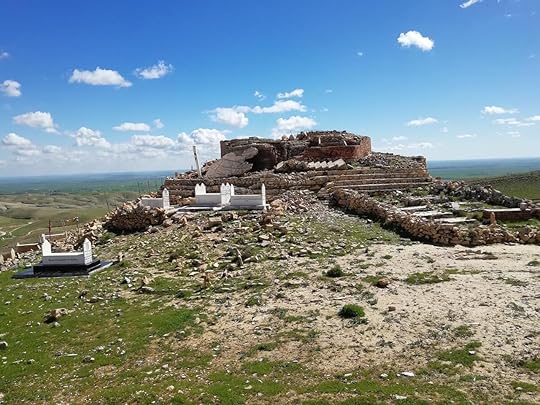
Photo: Robert Leutheuser/World Monuments Fund
The Mam Rashan Shrine is one of a number of holy sites erected around Mount Sinjar by the Yazidi people of northern Iraq. Linked to the Sinjar region since the 12th century, Yazidis were the victims of a genocide committed by the extremist Islamic State in 2014, which not only devastated the community but also saw the destruction of its religious heritage sites. A relatively small, but not insignificant, number of Yazidis have since reclaimed Sinjar as their home. Rebuilding the Mam Rashan Shrine is integral to reestablishing the community, as well as creating a home for the displaced Yazidis currently on the fence about returning to the area.
12. Inari-yu Bathhouse

Photo: World Monuments Fund
Public bathhouses have been cornerstones of Japanese culture for centuries. The practice of communal washing is dwindling in the modern era, which has also led to the shuttering of a number of Japan’s bathhouses. Located in Tokyo, Inari-yu is an example of a neighborhood bathhouse with staying power as it has stood since 1930. By considering new uses for Japan’s bathhouses, the WMF seeks to preserve the structures and their roles as community centers.
13. Iwamatsu District
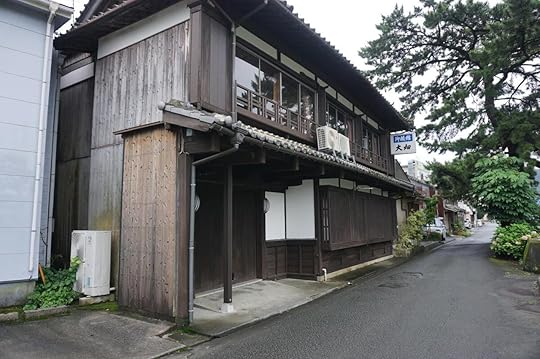
Photo: World Monuments Fund
A port settlement on the island of Shikoku, Iwamatsu made a name for itself by way of sake brewing, coming into its own as a town in the 17th century. Its prosperity peaked during the Meiji era of the late 19th and early 20th centuries, and the surviving structures from that period represent much of its historic value. In 2020, the WMF hopes to save the diminishing Iwamatsu District by refurbishing the erstwhile Konishi family home and other historic merchant houses.
14. Canal Nacional

Photo: World Monuments Fund/Facebook
At one time, Mexico City operated on a massive canal system. The waterways were used to transport goods and subsequently became hot spots for both local activity and urban wildlife. The canal network has been largely disregarded since the 20th century, but Canal Nacional has managed to remain relevant to the local community. Though there were talks of converting it into a road, the people of Mexico City protested to keep the waterway intact, a move that the WMF is defending with the canal’s inclusion on this year’s list.
15. Traditional Burmese Teak Farmhouses

Photo: World Monuments Fund/Facebook
Alongside the various abodes featured on this list, Myanmar’s traditional farmhouses have been deemed worthy of conservation. Made from teak and bamboo, and topped with thatched roofs, these village dwellings found around the Irrawaddy river delta chronicle the region’s transition from monarchical to post-colonial, when fewer restrictions were placed on construction materials. There’s a lot left to learn and record about the teak farmhouses that emerged in the late 19th century, a project local students have pledged to undertake with the WMF’s support.
16. Choijin Lama Temple
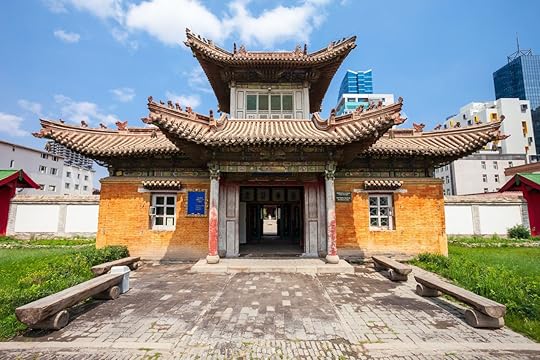
Photo: saiko3p/Shutterstock
When the communist regime swept through Mongolia in the 1920s, traditional Buddhist practices were among the greatest casualties. Both religious figures and artifacts were attacked, and the nation’s monasteries were closed if not razed altogether. The Choijin Lama Temple in Ulaanbaatar is one of few surviving holy sites from that time, and it has served as a museum since 1942. As Mongolian Buddhism makes a comeback in the modern era, the temple’s preservation is of the utmost importance for reclaiming the national heritage.
17. Chivas and Chaityas of the Kathmandu Valley
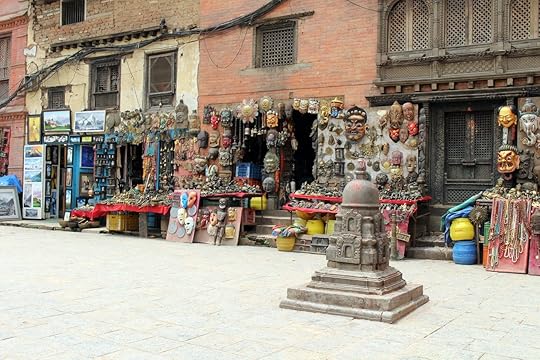
Photo: leodaphne/Shutterstock
Nepal was hit by a massive 7.8 earthquake in 2015, causing significant damage to Kathmandu Valley and its seven UNESCO World Heritage sites. Restoration efforts have been underway since the natural disaster struck, but the World Monuments Fund sees another threat to the valley on the horizon: urbanization. As Kathmandu Valley develops, many of its ancient Buddhist shrines, called chaityas, are at risk of being damaged or destroyed.
18. Anarkali Bazaar

Photo: muratart/Shutterstock
The name of both a neighborhood and market in Lahore, Pakistan, Anarkali has been a hub of activity for centuries. Alongside the bazaar, which is among the oldest lasting markets in South Asia, the neighborhood houses a 16th-century Mughal mausoleum. As the city’s population grows rapidly, the neighborhood is becoming increasingly difficult to maintain, with many of its historic sites bearing the brunt of urban development.
19. Sacred Valley of the Incas

Photo: cge2010/Shutterstock
Just north of Cusco in the Peruvian Andes is the Urumba river valley, otherwise known as the Sacred Valley of the Incas. Home to Machu Picchu, it’s a supremely trafficked area, and the state is in the process of developing an airport in the Sacred Valley to capitalize on its tourism potential. Understandably, this has everyone from archaeologists and anthropologists to the residents of Chinchero and members of the WMF worried about the negative impact the airport will have on the area’s indigenous culture and Incan ruins.
20. Kindler Chapel, Pabianice Evangelical Cemetery

Photo: World Monuments Fund
Though not everyone can pinpoint Pabianice, Poland, on a map next to its better-known neighbor, Lodz, the city was a major player of the country’s 19th-century textile industry. The city’s industrial importance has since waned, but the WMF has a vested interest in seeing the preservation of Kindler Chapel, which was gifted to the people of Pabianice by successful German textile manufacturer Rudolf Kindler. In an effort to rebrand and regenerate, the city seeks to restore the chapel to its prime and dedicate the building to civic use.
21. Courtyard Houses of Axerquía
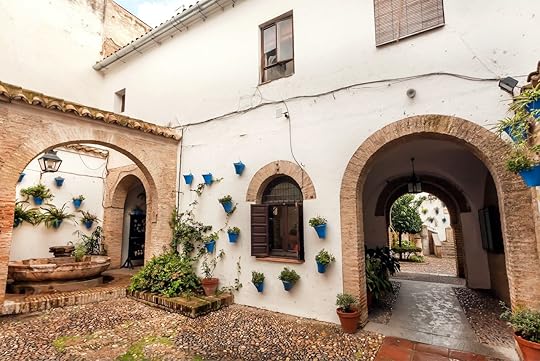
Photo: Radiokafka/Shutterstock
Cordoba, Spain, was established during the Roman era as a prominent port city. Centuries later, it would serve as a cultural capital of Islamic Iberia. As tourism increases, residents are leaving the historic center in favor of less-trafficked areas and more modern digs, and the city’s iconic courtyard houses are getting increasingly run-down. Local efforts are being made to restore the traditional housing, as well as prevent future issues involving mass tourism and gentrification, but the threat of destruction still looms for courtyard houses of Axerquía.
22. Bears Ears National Monument

Photo: Paul Brady Photography/Shutterstock
President Barack Obama named Utah’s Bears Ears a national monument in 2016 for its natural value and roughly 100,000 archaeological sites. Less than a year later, President Trump slashed the protected land by 85 percent, opening it up to mining, oil and gas extraction, logging, and other harmful activities. As tourism increases, the WMF hopes to protect the area’s indigenous inhabitants, preserve their ancestral home and heritage, and mitigate the damage being done to the natural environment.
23. Central Aguirre Historic District
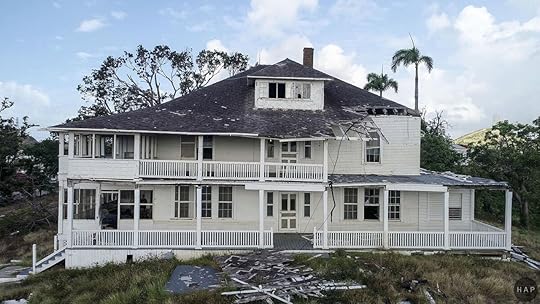
Photo: World Monuments Fund
On the southern coast of Puerto Rico, Central Aguirre established itself as a hub of sugar production between the mid-19th and mid-20th centuries. The entire town revolved around its original sugar mill during its glory days, but as the industry declined, the company town was all but abandoned. After the Irma and Maria hurricanes, the site is suffering even greater disrepair than its issues caused by neglect. In particular, the WMF seeks to preserve Central Aguirre’s historic wooden houses.
24. San Antonio Woolworth Building
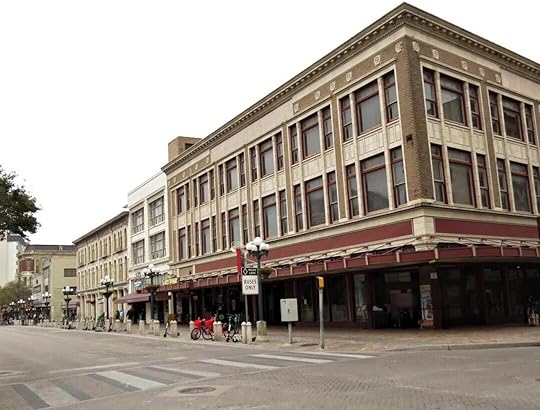
Photo: World Monuments Fund
Located on Alamo Plaza since 1921, San Antonio’s Woolworth Building secured its place in history decades later during the civil rights movement. In 1960, it became the site of a successful desegregation campaign when Woolworth’s and six other businesses opened their lunch counters to all without protest. Earlier lunch counter sit-ins had received pushback and often ended with police involvement. What’s to come of the building is uncertain at present, with some, including the WMF, fearing its demolition as San Antonio looks to revamp Alamo Plaza.
25. Traditional Houses in the Old Jewish Mahalla of Bukhara
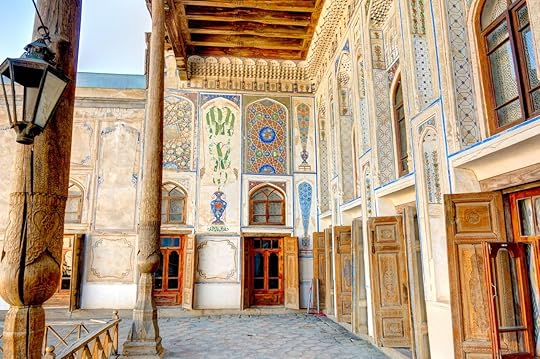
Photo: mehdi33300/Shutterstock
All eyes were on Uzbekistan last year as Central Asia started trending in the travelsphere. Many visit for the country’s Silk Road history, inevitably landing in Bukhara, a well-preserved medieval city whose historic center is UNESCO protected. Fewer people recognize Bukhara’s role in the Jewish diaspora, yet between the 16th and 20th centuries, it was one of the largest hubs of Jewish activity not only in Uzbekistan but also in Central Asia. The Bukharian Jewish quarter is largely abandoned now, with only 200 or so residents remaining there, jeopardizing the upkeep of the neighborhood’s traditional Bukharian houses. Noting the fine examples of Bukharian Jewish woodworking, the WMF hopes to see these houses preserved or repurposed sustainably. 

More like this: 11 amazing UNESCO World Heritage sites in danger of disappearing forever
The post 25 cultural sites to save in 2020, according to the World Monuments Fund appeared first on Matador Network.

Storm Gloria destroys

Storm Gloria tore through Spain this week, severely damaging hundreds of miles of Mediterranean coastline in the regions of Catalonia, Valencia, Murcia, and Andalusia, and bringing heavy snowfalls inland. Crops, roads, and coastal developments in and around Catalonia’s major hub of Barcelona were damaged or destroyed by the storm, which had claimed at least 13 lives as of Friday morning. Four people are missing, according to Spanish newspaper El País.
Over 400 miles of coastline in Catalonia were damaged by the storm, with more than 300 miles affected in Valencia. Travel disruptions are in place throughout Catalonia on Friday, with more than 130,000 students ordered to remain at home. Valencia’s regional premier Ximo Puig, speaking from Madrid, told reporters that “With an alliance of the public and private sectors, we will forge ahead. We are saddened by this disaster and the recovery will be very tough, but we are going to rise above this,” demanding action from the federal government to kickstart recovery efforts.
Storm Gloria traveled westward toward the coast of Spain after ripping through the Balearic Islands, causing panic in the tourist hub of Mallorca and its capital city, Palma de Mallorca. Waves nearly 20 feet high crashed onto beaches in some parts of the island. Once it reached mainland Spain, the delta of the Ebro River flooded 7,000 acres of rice fields, El País reported. The worst of the storm appears to have hit and passed, though more than 100 roads remained closed in the affected areas. 

More like this: Iconic Barcelona architecture that you can check out for free
The post Powerful storm in Spain kills 13 and destroys Barcelona beaches appeared first on Matador Network.

Best minimalist holiday resorts
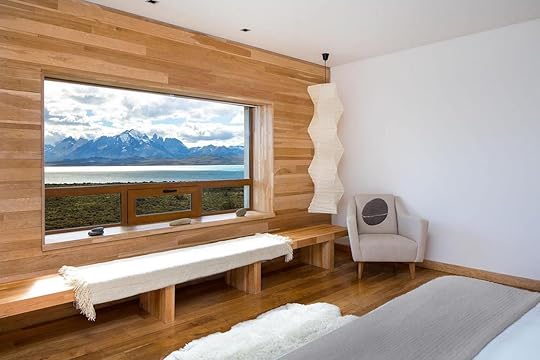
The beginning of every new year means setting new travel resolutions and updating the bucket list. From boarding the world’s most luxurious train to glamping on a cruise ship, the options are endless, but what many travelers are turning to this year is minimalism. Packing light and traveling in a more environmentally conscious way is a major theme in 2020, and many are choosing to retreat to a cozy cabin and connect with nature, leaving their buzzing phones behind. Minimalist accommodations don’t have to mean camping — these offer luxury, comfort, and high-end service. Here’s where to go for your minimalist vacation this year.
1. Juvet Landscape Hotel — Valldal, Norway
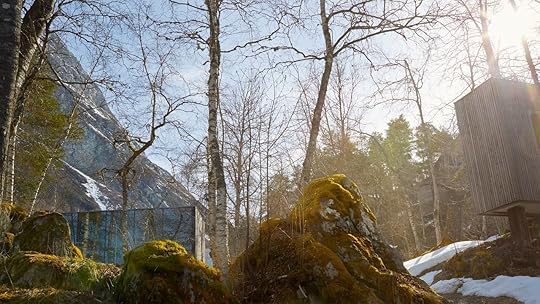
Photo: Juvet Landscape Hotel/Facebook
Nobody does minimalism better than Scandinavia, and the Juvet Hotel is a perfect example. Located just outside the remote village of Valldal between the Geiranger fjord and the Trollstigen viewpoint, Juvet is all about offering stunning panoramas. The experience begins even before you get there, as guests either drive or take a small plane from the nearest city, Ålesund, a testament to just how remote the property is.
Guests can choose to stay either in a cabin with a view — featuring floor-to-ceiling windows that look out directly to the mountain and sit above a river — or in one of Juvet’s human-sized “birdhouses,” which are narrow, high-ceilinged lofts perched on the slopes above the rest of the property. Architecturally, all lodging is designed on Scandinavian minimalist principles. There are no TVs anywhere, and instead, guests are encouraged to relax and enjoy the perfect hygge atmosphere.
Juvet entertains guests year-round with fjord kayak, rafting, canyoning, skiing, hiking, and climbing. Guests can also go on a fjord sightseeing trip to Geirangerfjord and Tafjord, and take in the views of Trollstigen mountains less than a half-hour away. After a full day of nature activities, guests can relax at the spa, which is designed to look like a cave and features a steam sauna, hot tub, and silent room.
From $207 per night
2. The Ranch — Malibu, California

Photo: The Ranch/Facebook
Begin 2020 with a detox from the hectic world of social media and the chance to try out a plant-based diet at The Ranch in Malibu. Staying here is all about achieving awareness and calibrating guests’ bodies and minds by focusing heavily on nature walks, a plant-based diet, and eliminating all stress. The staff at The Ranch actually prepares a fitness schedule and a tailored menu for each guest as a part of the minimalist, rejuvenating experience. They welcome both solo travelers and groups.
Stays are for a minimum of one week and require a $2,000 deposit. A day at The Ranch includes waking up to Tibetan chimes, a morning stretch, and a coconut parfait for breakfast followed by a hike. The afternoon invites guests to a nap, followed by a circuit training and restorative yoga, right before dinners comprised of plant-based variations of steak and other popular dishes. A minimalist vacation here also includes massages and beach time, making it an easy and ideal escape from LA.
From $7,800 per week
3. Arenal Manoa — Alajuela Province, Costa Rica

Photo: Arenal Manoa
Costa Rica is the perfect country for those who want to disconnect and travel lightly in 2020. At Arenal Manoa, instead of checking social media, travelers will find themselves soaking in one of the many volcanic hot springs in La Fortuna and getting soaked by a 120-foot waterfall on a canyoning expedition.
A minimalist vacation at the Arenal Manoa Hotel in La Fortuna begins with waking up to an unobstructed view of the volcano next door — observed from the rocking chair on the porch. The vibe is all about wellness and adventure. Arenal Manoa serves a local breakfast that includes fresh beet juice and local fruit. While WiFi is available, guests are encouraged to unplug and instead go hiking, have a massage, or enjoy a cold beer at the pool bar.
From $235 per night
4. Echo Valley Ranch & Spa — Clinton, British Columbia, Canada
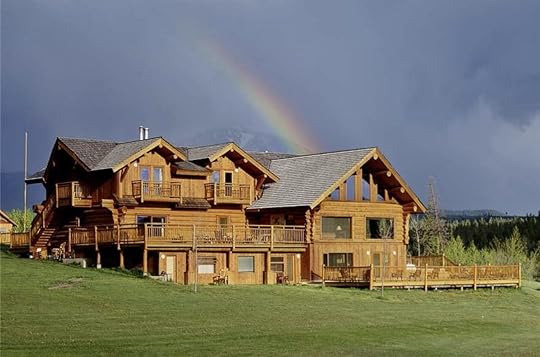
Photo: Echo Valley Ranch
Known for its vast landscapes and lush vegetation, British Columbia is a perfect choice for the minimalist traveler. Echo Valley Ranch & Spa is nestled at the bottom of the Cariboo Mountains and offers a front-row view of the surrounding pine forest, with green as far as the eye can see.
Accommodation here consists of luxury rustic wooden cabins. There are no TVs in the rooms, but guests instead have a long menu of entertainment they can choose from. The game room at the hotel has a pool table, shuffleboard, karaoke machine, and card table. Echo Valley offers Thai Yoga, guided nature trail walks, fly fishing, horseback riding, biking, shooting, and archery — all of which aim to get you to leave the screen behind and be fully immersed in the present moment.
From $240 per night
5. Tierra Patagonia — Torres del Paine, Chile

Photo: Tierra Hotels/Facebook
Tierra Patagonia, an adventure spa hotel located in the heart of Torres del Paine National Park, fully embodies the minimalist lifestyle with its floor to ceiling windows, whitewashed walls, and bare minimum when it comes to furniture. The hotel has bet on an elegant but very understated design in order to help guests recharge and destress by soaking up the mountain views, as well as the glistening Lake Sarmiento next door. The resort is all-inclusive and includes airport transfer as well as food, drink, and activities.
There are various activities offered, such as kayak expeditions, horseback riding at Entre Lagos or Estancia Lazo, wilderness bike rides at La Porfiada, birdwatching, fishing, or sailing to the Grey Glacier. Guests can also explore Hunter’s Trail, which follows the footsteps of the indigenous population of Patagonia. After a long day of adventure, guests can look forward to a glass of the red wine Patagonia is known for, followed by a hydro-massage at the spa.
From $2,437.50 for a three-night minimum stay
6. Die Wasnerin — Bad Aussee, Austria

Photo: DIE WASNERIN/Facebook
A minimalist vacation in Austria looks a lot like The Sound of Music — endless green fields, tall mountains, and all the space you could ever need to clear your head. Die Wasnerin is located in Styria, which is known for its glassy lakes and forests and is all about forest-bathing and spending as much time outside as possible. Guests are invited to go for a hike in the Ausseerland on one of three different routes, passing by lakes and farms with cows lazily grazing.
There’s plenty to do in the winter as well, such as skiing, snowshoeing, or treating yourself to a hot stone massage. The hotel offers yoga, both in and outdoors, as well as Nuad Thai, aerial yoga, and a sound bath massage that will get travelers to forget all responsibilities of the external world.
From $180 per night 

More like this: 2020 is the year to try a vegan hotel. These are the world’s best.
The post 6 minimalist resorts that will allow you to fully decompress appeared first on Matador Network.

What is Burns Night?

Burns Night, one of Scotland’s most beloved holidays, starts with Scotch whisky and climaxes with a passionate stabbing of a haggis. Every year on January 25, people around the world gather to read poetry, drink whisky, and, most importantly, celebrate haggis. It’s all in honor of Robert Burns, the 18th-century poet who wrote “Address to a Haggis” in 1786 and who is considered the national poet of Scotland to this day.
Often at Burns Night celebrations, it’s Scotland’s national dish that steals the show. Burns Night is the best night of the year for haggis lovers, the haggis curious, and anyone who just wants to get a taste of a dish that, depending on your company, is either reviled and mocked or held to the highest esteem.
My own first Burns supper started with plenty of Aberlour whisky, segued into a feast of haggis, and ended with a Burns poetry reading by Brian Cox and a group singing of “Auld Lang Syne,” another of Burns’ poems. This particular celebration was in New York City, but Burns suppers far and wide follow a similar progression.
The night can be as loose or as formal as the party decides. Katie Scott Aiton, Matador Network’s lifestyle editor, who is Scottish, had three Burns Night celebrations on her calendar for 2020. Some are dull, she says, and consist mostly of “old people just reading poems,” while others are more modern. One non-traditional Burns Night party she recently attended was run by a theater group that took “the piss out of Burns,” adding that the poet “was a funny man, so the mix between the comedic actors and the poetry and song was great.”
Traditional, dull, or modern, what each Burns Night celebration has to have is an enthusiastic reading of “Address to a Haggis,” usually performed by the host.
“Traditionally [reciting the poem is] to welcome the food to the table, to honor our national dish,” Aiton says of the poem and the Selkirk Grace (a prayer also written by Burns) recited before eating. “People take it quite seriously.”

Photo: Norman Pogson/Shutterstock
And why not take haggis seriously? Haggis is a pudding (a term which, in the British Isles, can also refer to a savory dish) traditionally made with mutton, offal (think lungs, heart, liver, and kidneys), oatmeal, onions, pepper, and other spices. The mix is stuffed into a sheep stomach (much like how hot dogs and sausages use intestine casings) and boiled. Haggis tastes of gamey meat and strong seasonings. Modern haggis interpretations are put into breakfast rolls and added to fry ups. There are even vegetarian haggis versions made with peas, barley, and mushroom.
Traditionally, it was the Scottish working class that consumed haggis. They’d combine leftover bits of meat to create a hearty meal, but it’s elevated by the words of Robert Burns every year. And yes,bagpipes are sometimes involved.
It’s only fitting that Scotland’s Immortal Bard chose haggis to herald. Burns was born in Alloway, Scotland, in 1759 to a farming family caught in the transition from an agriculture-based world to an industrial one. He returned to farming intermittently throughout his life between writing, philandering, and a stint toward the end of his life as a tax collector. Regardless of his position, he celebrated rural Scottish culture in his published work. Burns wrote in Scots, a vernacular that lost traction in Scotland as common English took over during Burns’ lifetime. This timing helped make Burns old Scotland’s last writer. As the Poetry Foundation puts it, “Burns remains the national poet of Scotland because Scottish literature ceased with him, thereafter yielding poetry in English or in Anglo-Scots or in imitations of Burns.”
Burns earned a level of fame during his lifetime as the voice for the everyman Scot. In a letter to a friend at the end of 1786, he wrote that he was on his way to being as well-known as famous English writers like John Bunyan. He added, “You may expect henceforth to see my birthday inserted among the wonderful events, in the Poor Robin’s and Aberdeen Almanacks.” It’s unlikely he could have known just how true that statement would become.
Burns died at 37 on July 21, 1796. His friends gathered for years after on his death day to celebrate the man. The celebration shifted over time to the less macabre date of his birthday. By 1859, what would have been his 100th birthday, Burns celebrations were widespread in Scotland and beyond. The climactic highlight of these parties is still the “Address to a Haggis.”
A full version of the original “Address to a Haggis” can be found on the BBC, while numerous sources translate the eight-stanza poem from the old Scottish dialect. Just don’t expect the person giving the speech to translate for you. What you can expect, however, is a well-worn ritual leading up to eating.
First, the haggis is brought into the room on a plate, occasionally with a bagpipe progression depending on how intense the party is. The host begins reciting the poem, often acting out what’s depicted. Things come to a head in the third stanza when the host wipes the ceremonial knife and stabs into the haggis while reciting:
“His knife see rustic Labour dight,
An’ cut you up wi’ ready sleight,
Trenching your gushing entrails bright,
Like ony ditch;
And then, O what a glorious sight,
Warm-reekin’, rich!”
The energy isn’t lost as the fourth stanza describes how people rush to eat haggis and the fifth and sixth stanzas mock the effete elite who prefer French and Italian cuisine. The final two stanzas state how haggis made Scotland strong, and if you want the country to love you, feed them haggis.
Partake in a Burns supper and you, too, will be singing praises for this humble Scottish dish. 

More like this: Scotland’s Speyside Whisky Trail is a tough trek with delicious perks
The post Why January 25 is the best day to try haggis appeared first on Matador Network.

Matador Network's Blog
- Matador Network's profile
- 6 followers



